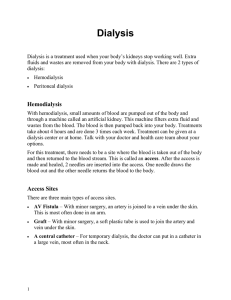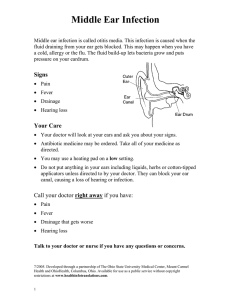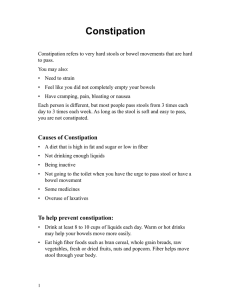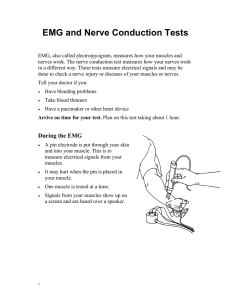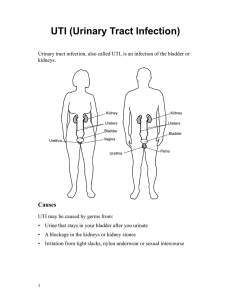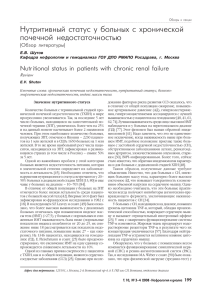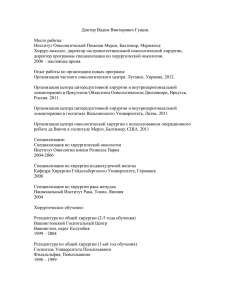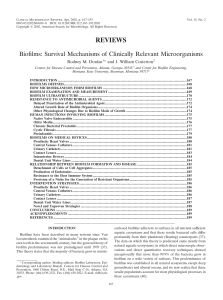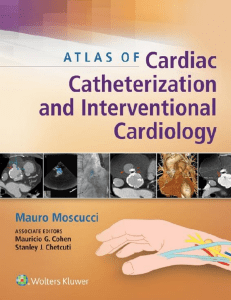Peritoneal Dialysis
реклама
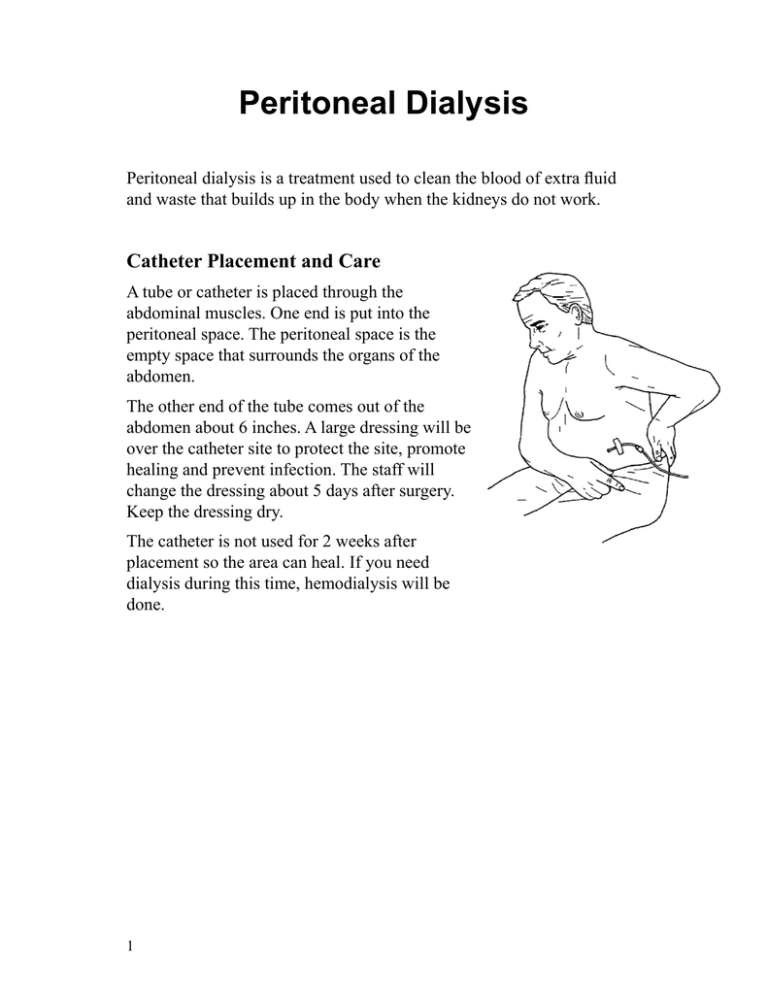
Peritoneal Dialysis Peritoneal dialysis is a treatment used to clean the blood of extra fluid and waste that builds up in the body when the kidneys do not work. Catheter Placement and Care A tube or catheter is placed through the abdominal muscles. One end is put into the peritoneal space. The peritoneal space is the empty space that surrounds the organs of the abdomen. The other end of the tube comes out of the abdomen about 6 inches. A large dressing will be over the catheter site to protect the site, promote healing and prevent infection. The staff will change the dressing about 5 days after surgery. Keep the dressing dry. The catheter is not used for 2 weeks after placement so the area can heal. If you need dialysis during this time, hemodialysis will be done. 1 Перитонеальный диализ Перитонеальный диализ – это способ лечения, используемый для очистки крови от излишней жидкости и продуктов жизнедеятельности организма, которые накапливаются в случае отказа почек. Место ввода катетера и уход за ним Трубка или катетер вводятся через брюшные мышцы. Один конец вводится в брюшную полость. Брюшная полость – это полое пространство, которое окружает органы в животе. Другой конец трубки выходит из живота примерно на 15 см (6 дюймов). Поверх места введения катетера накладывается повязка с целью защиты, скорейшего заживления и предотвращения инфекции. Персонал поменяет Вам повязку через 5 дней после хирургической операции. Не мочите повязку. В течение 2 недель после ввода катетер не будет использоваться, чтобы это место могло зажить. Если Вам необходим диализ в течение этого времени, будет проведен гемодиализ. Peritoneal Dialysis. Russian. 1 How Peritoneal Dialysis Works Continuous Ambulatory Peritoneal Dialysis (CAPD) This 3-step process is called an exchange. Fill New Solution 1. Fill A bag of solution called dialysate is put into the abdomen through the catheter. This bag holds about 2 quarts of fluid. It takes about 10 to 20 minutes to fill. When the bag is empty, it can be clamped off or the tubing can be capped off. Dwell 2. Dwell The solution stays in the abdomen 4 to 6 hours. While the solution is in the abdomen, extra fluid and wastes move from the blood and into the solution. Solution Cap Drain 3. Drain Using gravity, the solution is then drained out of the body into a drain bag. The drained fluid is much like urine and will be clear yellow. It takes about 10 to 20 minutes to drain. Old Solution 2 Что происходит при перитонеальном диализе Постоянный амбулаторный перитонеальный диализ (ПАПД) Этот трехэтапный процесс называется обменным поглощением. Наполнение Новый раствор 1. Наполнение Содержимое мешочка с раствором, который называется диализатом, вводится в брюшную полость через катетер. Этот мешочек содержит около 1,9 литра (2 кварты) жидкости. Эта процедура занимает от 10 до 20 минут. Когда мешочек освободится, можно будет его отсоединить, или закрыть трубку колпачком. Выдержка 2. Выдержка Диализат остается в животе 4-6 часов. Пока раствор находится в брюшной полости, лишняя жидкость и продукты жизнедеятельности организма перемещаются из крови в раствор. Раствор Колпачок Дренаж 3. Дренаж Под действием силы тяжести раствор выводится из организма в дренажный мешочек. Выделенная жидкость очень похожа на мочу и имеет светло-желтый цвет. Выделение длится от 10 до 20 минут. Использованный раствор Peritoneal Dialysis. Russian. 2 When the solution is drained, a new bag of dialysate is connected to the catheter and the steps are repeated. These 3 steps are done about 4 times each day with meals and at bedtime. Each cycle takes 20 to 40 minutes. After you are trained, you can do peritoneal dialysis anywhere there is a clean, private area. To prevent infection, the exchange must be done under clean conditions and the patient may need to wear gloves and a mask. Continuous Cycling Peritoneal Dialysis (CCPD) With CCPD, there are fill, dwell and drain cycles, but the dwell time is shorter and a machine does the exchanges. The dwell time is about 1½ hours. The machine is set up and the person is connected to this machine for 8 to 10 hours during the night. The person is unhooked from the machine during the day. When to Call Your Doctor Call your doctor when you have any of these signs of PD problems: • Shortness of breath • Swelling in the arms, legs, face or abdomen • Extreme itching or bone pain, this can be a sign of too much phosphorus in the body • Dizziness, nausea or cramping in the toes, feet or stomach • Cloudy bags or drained dialysis solution is pink in color • Redness, pain or swelling • Leaking from the catheter site 3 Когда раствор выведен из организма, к катетеру подсоединяется новый мешочек диализата, и вся процедура проделывается вновь. Эти 3 этапа повторяются примерно 4 раза в день вместе с приемом пищи и перед сном. Каждый цикл занимает от 20 до 40 минут. Когда Вы научитесь проделывать это сами, Вы сможете проводить перитонеальный диализ в любом отдельном чистом месте. Для предотвращения инфекции процедура обменного поглощения должна выполняться в стерильных условиях и, возможно, пациенту придётся надевать перчатки и маску. Постоянный циклический перитонеальный диализ (ПЦПД) При ПЦПД также имеются циклы наполнения, выдержки и слива, но время нахождения диализата в брюшной полости короче, около полутора часов, а его смену выполняет машина. Аппарат подключается к человеку на 8-10 часов в течение ночи. В дневное время человек отключается от аппарата. Когда обращаться к врачу Позвоните врачу при наличии любой из этих проблем, связанных с перитонеальным диализом: • Одышка • Отеки рук, ног, лица или живота • Сильный зуд или боль в костях, что может быть признаком избытка фосфора в организме • Головокружение, тошнота, судороги пальцев ног, ступней, мышц живота • Мутная жидкость в дренажном мешочке либо выделенная жидкость розового цвета • Покраснение, боль или опухание • Подтекание жидкости в месте введения катетера Peritoneal Dialysis. Russian. 3 • Catheter adapter or catheter falls out, or comes apart • Hole in the catheter • Changes in blood pressure Talk to your doctor or nurse if you have any questions or concerns. 2008 – 6/2012 Health Information Translations Unless otherwise stated, user may print or download information from www.healthinfotranslations.org for personal, non-commercial use only. The medical information found on this website should not be used in place of a consultation with your doctor or other health care provider. You should always seek the advice of your doctor or other qualified health care provider before you start or stop any treatment or with any questions you may have about a medical condition. The Ohio State University Medical Center, Mount Carmel Health System, OhioHealth and Nationwide Children’s Hospital are not responsible for injuries or damages you may incur as a result of your stopping medical treatment or your failure to obtain medical treatment. 4 • Выпал или отсоединился катетер или переходник катетера • Появившееся отверстие в катетере • Изменения артериального давления Если у Вас есть какие-либо вопросы или опасения, обратитесь к Вашему врачу или медсестре. 2008 – 6/2012 Health Information Translations Unless otherwise stated, user may print or download information from www.healthinfotranslations.org for personal, non-commercial use only. The medical information found on this website should not be used in place of a consultation with your doctor or other health care provider. You should always seek the advice of your doctor or other qualified health care provider before you start or stop any treatment or with any questions you may have about a medical condition. The Ohio State University Medical Center, Mount Carmel Health System, OhioHealth and Nationwide Children’s Hospital are not responsible for injuries or damages you may incur as a result of your stopping medical treatment or your failure to obtain medical treatment. Peritoneal Dialysis. Russian. 4
